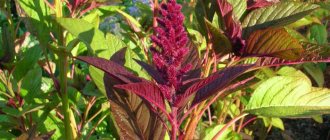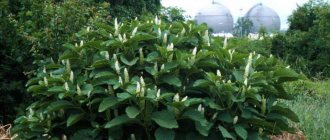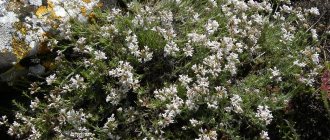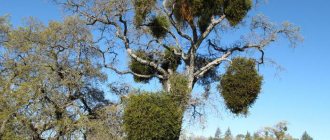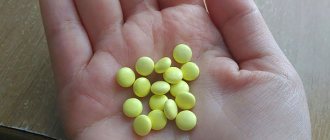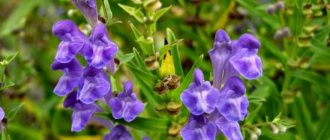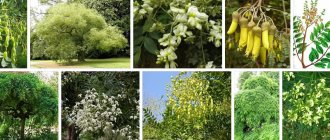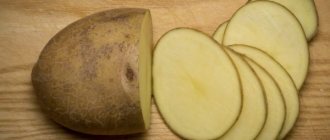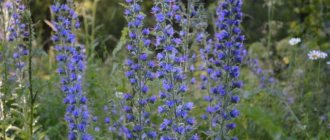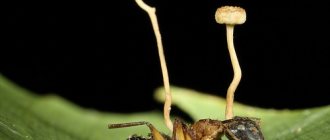Using tansy
Kanufer is actively used not only as a remedy, but also for other purposes.
Tansy can help if there are fleas, cockroaches or bedbugs in the house, since they cannot stand its pungent smell. To remove these pests, scatter dried flowers on the floor in all rooms and place them under the mattress. Kanufer is actively used not only to treat people, but also animals. It has been used in veterinary medicine for a long time and has fully proven its effectiveness. Quite often, tansy is used as the main additive to flea treatments for animals.
It is also effective as a fly repellent.
Tansy is also used as a hair care product. With its help you can give your hair beauty, shine and get rid of dandruff. Kanufer is a key component of many modern balms and shampoos.
Tansy in cooking
The essential oils present in this plant have found their use in various areas of cooking.
- Tansy is used to make kvass and as an additive to some meat dishes; it can effectively replace hops.
- When baking various confectionery products, the plant can replace cinnamon, ginger or nutmeg. It is also used in the production of some alcoholic beverages.
This beautiful and useful plant is irreplaceable in gardening. It is actively used as an ornamental plant for landscaping parks and streets.
As you can see, tansy is used not only as a medicine, it is also in demand in cooking and cosmetology. Kanufer is one of those plants that should be used wisely. It is in this case that you can achieve the desired, positive result.
Tansy balsam or canuper (kanufer) is a perennial herbaceous plant of the Asteraceae family. This plant can be found almost everywhere: in forest clearings, fields, meadows. Canuper is also planted in gardens and orchards as an ornamental, spicy-aromatic and medicinal plant.
Balsamic tansy - spice and medicine
01/21/2021 Balsam tansy ( lat. Tanacetum balsamita
) refers to perennial herbaceous rhizomatous plants of the Asteraceae or Compositae family. For several thousand years, this crop has been actively used as a medicinal plant. It was actively cultivated in ancient Greece and Rome and was used for diseases of the gastrointestinal tract and as a powerful antiparasitic agent. Currently, balsamic tansy is better known and used as an aromatic spice.
Among other names of the plant, the most popular are pyrethrum, Saracen mint, fieldfare, balsam rowan, incense nine-strong, tansy, Spanish chamomile, canuper (kanufer) and others. By the way, the name canuper appears in Nikolai Vasilyevich Gogol’s work “Evenings on a Farm near Dikanka”, in the place where the characters in the story argue about whether this spice should be put in soaked apples or not.
Around 800 AD, balsamic tansy was mentioned in instructions for the management of estates, which were drawn up personally by the Frankish king Charlemagne. The document was called the “City Capitulary” and contained a list of 72 plants recommended for cultivation in monasteries. By the way, tansy occupied an honorable place in the second ten in this list. This fact significantly contributed to the popularization of this culture.
A similar list of plants recommended for cultivation in Russia existed during the reign of Peter I. It also included a place for balsamic tansy.
In the New World, this plant was often called "Bible leaves." When balsam tansy arrived in the United States along with settlers, the lower leaves of the plant, due to the presence of long petioles, were actively used as bookmarks for books, and in particular the Bible. It was believed that the pleasant aroma emanating from the leaves kept the laity in good shape, preventing them from falling asleep during sermons.
For the same reason, among the names of balsamic tansy in Russia, the name of the Blessed Virgin Mary is found, for example, “herb of the Virgin Mary” or “mint of the Mother of God.”
Balsamic tansy enjoyed high popularity until the middle of the 19th century. Alas, at present we have to state with regret that this crop has been undeservedly forgotten and the process of its active cultivation has practically ceased. Nevertheless, tansy continues to be used quite actively as a balsamic spice. It is used in the preparation of marinades, added to entrees, meat, vegetable dishes and salads, and added as a natural flavoring in the manufacture of various drinks.
Young leaves and stems are used for food, which are collected at the beginning of the formation of flower buds. To do this, the plants are completely cut off at a height of 15–20 cm.
Since greens have a rather bitter taste when fresh, they are first dried and then ground into powder. To dry, the petioles are removed from the leaves and the coarsest parts of the plant are discarded, and then laid out in the fresh air, in shady places.
Tansy can be dried in dry and well-ventilated areas. To do this, the collected raw materials are first laid out in an even layer, and then turned over from time to time.
Many modern chefs use fresh balsamic tansy leaves when preparing fatty meat dishes. In this case, slight bitterness promotes better digestion of foods.
The aroma of balsamic tansy is tart, slightly resinous, but soft and pleasant. It comes from absolutely all above-ground parts of the plant, including leaves, stems, inflorescences and buds.
Description of the plant
Balsam tansy has erect, branched stems at the top that can reach from 50 to 120 cm in height. The lower part of the shoots is heavily leafy.
The rhizome is creeping, branched, woody.
The leaves of the plant are light green, slightly bluish in color and slightly velvety to the touch. They are solid, elliptical in shape with small teeth. The upper leaves are sessile, the lower leaves are petiolate.
Tansy does not have marginal flowers. Its peduncles are tall, hard, heavy, with small baskets of yellow flowers, which are collected in dense corymbose inflorescences. Blooms in July-August.
The fruit is an achene up to 2.5 mm in length.
In our country, balsam tansy, as a rule, does not form seeds, so vegetative methods are used for its propagation, which include dividing the rhizome or cuttings from above-ground shoots.
When propagated by a rhizome, it is dug up, divided and then transplanted to a new location to a depth of 8–10 cm.
It is recommended to carry out work on transplanting tansy in early spring or autumn, but no later than the beginning of August, so that it safely survives the stress and has time to take root well. For propagation, 2-3 year old plants are usually used.
Tansy can grow in one place for up to 10–15 years, but it does not grow particularly strongly.
This plant is absolutely unpretentious and winter-hardy. Tansy feels good on any soil without stagnant water. The only thing that is important to ensure good growth and development is a sufficient level of sunlight.
The flowering process begins in the second year from planting.
In the Transcaucasus, in the northern part of Iran, as well as in some countries of Asia Minor, you can find a wild variety of balsam tansy (lat. Pyrethrum balsamita). Unlike the cultivated form, this plant has a more pronounced and pungent camphor aroma. It has narrower leaves and paniculate inflorescences with white reed flowers that reach a length of 5 to 10 mm. It also blooms in July-August.
Pyrethrum reproduces well using seeds and is capable of self-seeding. Since this variety of tansy has a high growth rate, it is classified as a malicious rhizomatous weed, although it is often used as an ornamental crop.
Useful properties of the plant
The inflorescences and leaves of balsam tansy contain up to 2.1% essential oil.
The spice has a powerful antiseptic, antiparasitic and antispasmodic effect. It is also used as a choleretic and analgesic for cramps.
The aromatic extracts of the plant are infused with olive oil, and then treated with wounds, abrasions and bruises.
Carl Linnaeus believed that this plant could act as an antidote to opium, but modern scientists have refuted this claim.
Balsamic oil for the treatment of inflammation, bruises, joint diseases
The herb, which is rich in medicinal properties, is also recommended for external use. A home remedy will relieve inflammation on the skin, joints, and pain from a bruise.
Balsamic oil based on canuper is also recommended for use in facial skin care - the active ingredients will help cope with acne, rashes, and activity of the sebaceous glands. Preparation:
- Pour chopped herbs (30 g) into a glass bottle.
- Pour olive oil (150 ml) heated in a water bath.
- Close the bottle and leave in a dark room for a week.
- Strain and squeeze the cake thoroughly.
Use oil to rub painful areas. Carry out the procedure on clean skin - after removing moisture, apply a small amount of the drug and rub into the dermis with vigorous, light movements.
When treating pimples and acne, treat problem areas with a cotton pad soaked in oil. Use the product at least three times a day.
Collection, features of drying, storage
To prepare products based on canuper, the inflorescences of the herb are used. It is recommended to collect them together with peduncles and a small part of the stem at the beginning of flowering - it is during this period that plant materials accumulate the most useful substances.
It is not recommended to use browned flowers for medicinal purposes - a change in shade indicates a decrease in the amount of some important elements.
It is recommended to cut tansy inflorescences with a sharp knife or pruning shears. Immediately put in a basket or tie in bunches.
At home, spread the plant materials on baking sheets and send them to dry under ventilated sheds. It is better to hang the bunches. In hot weather, the grass dries out quickly - a few days are enough.
Place ready-to-cook plant materials in glass jars and plastic containers. Store in a cool place with low humidity. Useful qualities remain unchanged for up to three years.
Article for you:
Wormwood: medicinal properties and contraindications, use in gynecology, cosmetology and folk medicine
Distribution area and botanical description
The canuper got its unusual nickname from the inhabitants of North America. Petioles with lower leaves were often used as bookmarks for the sacred book - the Bible.
The perennial plant belongs to the Asteraceae family. The distribution area is the Caucasus and the European part of the Russian Federation, Central Asia. The height of the stem reaches up to 150 cm. The leaves have a pleasant and bright aroma and have a fine-toothed shape.
The inflorescences are presented as baskets with small flowers, up to 1 cm in diameter. The flowering period lasts from July to September. It is unpretentious in the choice of soil and predominates in meadows of average fertility.
The genus is very extensive and includes about 170 plants. The most popular is pyrethrum, popularly called chamomile. It has beneficial properties; tinctures and mixtures are used to reduce heat and fever.
Tansy vermilion is a well-known ornamental garden plant. It is distinguished by its bright color and large flowers.
Interesting facts about kalufer
In Ancient Rome and Greece, statues of gods were decorated with wreaths of pyrethrum balsamic, giving preference to a rare species with flowers similar to chamomile.
Together with the settlers, the kanufer spread throughout Europe and moved to Britain. Here it was first appreciated as a spice. The British were not spoiled with Indian seasonings due to geographical distance.
Already from 800 AD, during the reign of Charlemagne, balsam pyrethrum became part of the mandatory range of plants that were planted in gardens at monasteries. There are a total of 72 names of valuable herbs on this list.
With the ships of the conquistadors, Saracen mint entered North America - it was a mandatory “medicine” in the ship’s first aid kit. There it received a new name - Bible leaf. The leaves were used as bookmarks in the Bible. Subsequently, Mormons sniffed the plant during hours-long services, restoring the tone of the body.
Russian clergy also inserted leaflets into the Bible. Thanks to this use, pyrethrum received the name balsam poppy.
In the Middle Ages, Saracen mint was already grown specifically in gardens and actively added to dishes.
But Peter the Great brought the kanufer to Rus'. Perhaps the plant was already found in the wild, but it was not used as food or as a medicinal raw material.
Dried leaves and buds were sewn into bags, mixed with lavender balls, and the packages were placed between clothes or bedding. This helped protect things from moths and scented them instead of perfume. Young girls placed bunches of Saracen mint “for sweet dreams” under pillows.
During the wars, kanufer was used as a remedy for lice, sprinkled on the heads of long-haired girls. Until now, dried powder is used to protect against bedbugs and cockroaches, especially if there are pets in the house. To prevent insects from getting in, dried buds are sprinkled on all wooden furniture.
Saracen mint oil has a healing effect. It can be obtained by infusing the leaves and buds in olive oil. The product is used to treat purulent wounds and burns, to fight acne and eliminate dry skin.
Watch a video about balsamic pyrethrum:
Chemical composition of tansy
Canuper contains various phytochemicals, such as essential oil, phenylpropane derivatives, flavonoids, lactones, tannins, tannins, etc. Among the flavonoids, derivatives of apigenin and luteolin can be noted.
Recent studies have shown that the essential oil has strong antibacterial and insecticidal activity.
At the moment, approximately 200 substances have been isolated from the plant (from its aerial parts). The most common components are: camphor, carvone, α-thujone, β-thujone, 1,8-cineole, β-caryophyllene, pyrethrin I, pyrethrin II, etc.
The essential composition of a plant's oil may vary depending on genetic, geographic and climatic factors. The essential oil content of the leaves is somewhere between 0.31 – 1.25%. And the oil content in other parts of the plant varies from 0.06 to 2.2% in terms of dry weight.
The predominant component of the essential oil is carvone (56 – 80%).
It should be noted that to obtain high-quality canuper essential oil, the plant must be cut in the early stages of flowering.
Canuper plant medicinal properties, main uses and contraindications
Suitable for use in colic and spasms. It is a good anthelmintic. Recommended for use for liver problems and cholecystitis.
Decoctions are an effective choleretic agent. Teas and freshly prepared decoctions that have a sedative effect on the nervous system are very useful.
Balsamic tansy oil has a strong antiseptic and healing effect. It is used to treat wounds to prevent the development of infection. Thanks to the combination of vitamins and acids, it has a wound healing effect.
In addition to its beneficial properties, it has a number of contraindications:
- individual intolerance;
- Consumption during pregnancy and breastfeeding is prohibited;
- Use is not recommended in the presence of peptic ulcer or hyperacid gastritis;
- when allergic reactions occur.
- One part of fresh leaves is poured with five parts of oil. Insist for 2 weeks in a dark place. The balsamic oil obtained in this way is used to treat wounds, bruises and bruises.
- Canuper has a strong aroma, which is why it is included in herbal teas. It is brewed with mint, thyme, and oregano. This tea is an excellent anthelmintic.
- The plant has a choleretic and antispasmodic effect, which helps in the treatment of diseases of the stomach, liver, and gall bladder. To do this, make a decoction of 20 g of dried balsamic tansy and 200 ml of boiling water. The composition is infused for 20 minutes. Take 1/2 cup 30 minutes before meals 4 times a day.
- This is an indispensable remedy for intestinal colic. The pain subsides and the effect lasts for a long time.
A decoction of canuper can be used for hypotension as a means of raising blood pressure. For frequent cystitis, taking balsamic tansy will relieve inflammation of the bladder mucosa and promote its restoration.
Official medicine classifies balsam tansy as a poisonous plant, so it is important not to exceed the dosage. Absolute contraindications to its use are: pregnancy, exacerbation of stomach ulcers, allergies, gout
The plant is poisonous, so all products made on the basis of kanufer must be used very carefully, avoiding exceeding doses. If you have gout, hyperacid gastritis and exacerbation of ulcers, this plant should not be used!
The plant is poisonous, so all products made on the basis of kanufer must be used very carefully, avoiding exceeding doses. If you have gout, hyperacid gastritis and exacerbation of ulcers, this plant should not be used!
Contraindications to treatment with balsamic tansy are:
- pregnancy;
- gout;
- gastric and duodenal ulcers in the acute stage;
- hyperacid gastritis;
- individual intolerance and allergic reactions.
Attention! You should not exceed the recommended dosage of medicinal products and do not get carried away with canuper-based products, since this plant contains toxic substances. The powder is used as an insecticide
A green dye is obtained from the rhizomes. The leaves are used for canning vegetables. Dry crushed leaves of the plant are an excellent spice. It is used in the confectionery and liquor industries, and is also added to minced meat, salads and kvass.
The powder is used as an insecticide. A green dye is obtained from the rhizomes. The leaves are used for canning vegetables. Dry crushed leaves of the plant are an excellent spice. It is used in the confectionery and liquor industries, and is also added to minced meat, salads and kvass.
Having decided to use balsam tansy for medicinal purposes, you should know that, in addition to its beneficial properties, there are also contraindications to the use of this plant:
- Pregnancy and lactation period.
- Gastric ulcers (during exacerbation).
- Gastritis.
- Gout.
- Individual intolerance and allergies.
You should know that the plant contains poisons in small quantities, and an overdose of drugs can cause poisoning. Before starting treatment, you should consult your doctor. As you can see, the canuper has quite a wide range of applications.
You should know that the plant contains poisons in small quantities, and an overdose of drugs can cause poisoning. Before starting treatment, you should consult your doctor. As you can see, the canuper has quite a wide range of applications.
Hair rinse based on canuper
Tansy contains elements that have a beneficial effect on hair. Regular use of the decoction as a rinse for strands will help strengthen the roots, saturate the tissues with useful substances, and improve the appearance of the curls.
If your hair is oily, you should also use a herbal remedy - the active ingredients normalize the functioning of the sebaceous glands.
Mix 10 gr. flowers of canupera, calendula, thyme, sage leaves, strings. Chop the herbal ingredients and steam with boiling water (500 ml). Place on low heat, wait until it boils, wait 3 minutes, remove, leave for 10-15 minutes.
Strain and use to rinse strands after each shampoo. If the problem is too serious, hair falls out rapidly, repeat the procedure every 2-3 days.
Treatment of diabetes mellitus with canuper decoction
Tansy contains components that can stabilize blood sugar levels. It is recommended to use a herbal decoction at home in combination with drug therapy prescribed by a specialist. The main thing is to coordinate traditional treatment with a doctor; self-medication is strictly prohibited. Step by step recipe:
Place dried canupera flowers (15 g) in a container; it is recommended to first grind them using a mortar.
- Bring water (250 ml) to a boil and steam the vegetable pulp.
- Stir, cover the container with a lid, and place in a water bath.
- Simmer the homemade medicine for a quarter of an hour, do not remove the lid.
- Leave to brew for half an hour, strain.
Take the homemade medicine three times a day. Dosage – 50 ml. Treatment is carried out in courses - half a month of taking the decoction, a week off.
Kanufer in the garden and on the table
Balsam tansy is undemanding in terms of soil fertility and care. It is enough to feed the clump with a solution of nitrogen fertilizers in early spring and water it in dry weather in the summer.
In a favorable climate, the kanufer even runs wild, successfully competing with local vegetation and forming thickets. But in the conditions of the Non-Black Earth Region and Siberia, the seeds do not have time to ripen properly, and reproduction occurs mainly vegetatively. However, control his ability to seize territory.
A very unique, pleasant balsamic smell is inherent in all parts of the plant. In young spring leaves it is softer, during the flowering period it has pronounced resinous notes. It was not without reason that our ancestors used it in cooking paired with mint; these plants complement each other perfectly. Mint with its “chill” softens the resinousness of kanufer, and kanufer adds interesting shades to the simple menthol aroma of mint. Dried kanufer can be added to meat, fish, vegetable dishes, gingerbread, various liqueurs and alcohol tinctures. The buds are used in pickles and marinades.
Kanufer: benefits and medicinal properties
Kanufer is successfully used in folk medicine.
An infusion of canoufer leaves in olive oil is a very strong antiseptic and wound-healing agent. This oil is applied to wounds, ulcers, abrasions, and hematomas. This remedy is especially effective for burns, including those caused by steam.
An aqueous infusion of kanufera flowers, like tansy, is used as an anthelmintic for adults. 1 tbsp. l. dry kanufer herb or its mixture with thyme, pour 1 glass of boiling water, leave for half an hour. Take half a glass in the morning and evening on an empty stomach, 1 hour before meals.
Kanufer infusion is also used for indigestion, general weakness, and loss of strength. 30 g of dry kanufer herb is poured into 1 liter of red wine, left for 2 weeks, filtered and drunk half a glass half an hour before meals.
And kanufer is an excellent assistant to the gardener in the fight against insect pests. An infusion of herbs kills aphids, bedbugs, and sawflies. The well-known anti-bedbug remedy “Persian powder” in the past was also made from the herb of one of the varieties of pyrethrum. Moreover, the powder is absolutely harmless to humans and warm-blooded animals.
Tatiana Pilipchuk, Moscow
Kanufer: benefits and medicinal properties
Kanufer is successfully used in folk medicine.
An infusion of canoufer leaves in olive oil is a very strong antiseptic and wound-healing agent. This oil is applied to wounds, ulcers, abrasions, and hematomas. This remedy is especially effective for burns, including those caused by steam.
An aqueous infusion of kanufera flowers, like tansy, is used as an anthelmintic for adults. 1 tbsp. l. dry kanufer herb or its mixture with thyme, pour 1 glass of boiling water, leave for half an hour. Take half a glass in the morning and evening on an empty stomach, 1 hour before meals.
Kanufer infusion is also used for indigestion, general weakness, and loss of strength. 30 g of dry kanufer herb is poured into 1 liter of red wine, left for 2 weeks, filtered and drunk half a glass half an hour before meals.
And kanufer is an excellent assistant to the gardener in the fight against insect pests. An infusion of herbs kills aphids, bedbugs, and sawflies. The well-known anti-bedbug remedy “Persian powder” in the past was also made from the herb of one of the varieties of pyrethrum. Moreover, the powder is absolutely harmless to humans and warm-blooded animals.
Canuper herb medicinal properties photo
General information
In ancient times it was actively used in medicine and cooking. The leaves were dried and made into bookmarks. These bookmarks were used to get rid of lice that eat book pages. Today it is more often mistaken for a weed and removed from plots.
Sometimes used as a spice. You can meet the culture in the countries of southern Europe, often on the territory of ancient monasteries.
Kanufer is considered a biblical herb, one of the names is biblical leaf.
According to legend, Mary Magdalene washed the feet of Jesus with a solution of canoufer. There was a more practical explanation for these numerous landings.
Canoufer leaves emit a bright spicy smell. They were taken with them to the service, which could last for long hours. The aroma kept parishioners from falling asleep during the liturgy.
Read about other medicinal herbs on our website.
Where does it grow
Balsam tansy is a perennial crop from the Asteraceae family. The homeland is considered to be the Mediterranean Sea.
Also in the Middle Ages it grew in Asia and Persia.
Currently, the culture grows in the wild gardens of Turkey and Iran.
Appearance:
- Kanufer grows like grass and can sometimes form bushes up to a meter high.
- It has upright growing shoots with fibers and oblong bright leaves. The crop blooms in the second half of summer.
- The flowers form baskets of yellow or white flowers.
- The flower stalks look vaguely like small buttons.
Flowers have pistils and stamens, so they can reproduce independently, with the help of insects.
The flowers produce a volatile oil that gives a spicy, bright aroma.
Thanks to this smell, the plant is used as an aromatic additive in teas, decoctions, and tinctures. The oil also has a cosmetological and healing effect.
Application of kanufer
It has antiallergic, sedative, antimicrobial and antibacterial properties. Sometimes tansy flowers and leaves are used in perfumery, as well as in the confectionery field.
Medicinal properties
The plant has wide therapeutic uses.
- The herb is good to add to tea, breast tea.
- These drinks help treat colds, digestive system disorders, improve immunity, and calm the nervous system. The leaves can be used as an inhalant.
- This is an excellent remedy for rhinitis, sinusitis, and for the prevention of sinusitis.
- Crushed leaves are applied to wounds, bites or burns.
- The sedative properties of kanufer help with insomnia. To do this, pillows are stuffed with leaves and stems.
The culture contains many chemical elements that have beneficial properties.
Canufera essential oil
The essential oils released by the flowers contain more than two hundred medicinal compounds.
The most useful and effective are: camphor, caryophyllene, pyrethrin-1, pyrethrin-2, tannins and others.
Let's take a closer look at the features of these compounds.
Camphor is a substance that has an anti-inflammatory effect. It helps well with food poisoning, dysentery, stomach and intestinal disorders. It is also known to have an expectorant effect and relieve swelling.
Thujon . The substance has two categories: alpha and beta. They follow the action. Stimulates the female menstrual cycle, kills bacteria, and is an insecticide.
Cineole. Also known as eucalyptol. Antibacterial compound, relieves allergy symptoms, removes bile. Has an anti-inflammatory effect, relieves spasms. The sedative effect of the substance is also known. Fights hypertension, calms the nervous system, helps with insomnia. Cineole is a good antiseptic.
Beta-caryophyllene is an anti-inflammatory, decongestant substance. Antispasmodic and analgesic, helps with pain, relieves inflammation and tumors. Is a strong sedative.
Drugs containing beta-caryophyllene are often prescribed for the treatment of mental disorders, neuroses, and depression. In addition, the substance produces endorphin when interacting with skin cells. Therefore, it is often used in cosmetology and perfumery.
The chemical composition of the plant, the amount and concentration of compounds depend on the growing conditions.
The place of growth and climatic features also leave their mark on the content of useful substances. The total number of oils and compounds varies between 0.3 and 1.2 percent.
In order for the plant to release more active oil, it must be cut at the beginning of flowering.
Application in other areas
Along with medicinal use, kanufer is widely used in the food industry, home cooking, cosmetology, and perfumery.
- Previously, kanufer shoots extended the shelf life of beer drinks.
- The leaves of the culture are added to tea, lemonades, and tinctures.
- Tansy can fully replace mint.
- The herb is a good aromatic spice. Pairs well with meat and fish dishes. Added to salads, seafood dishes, soups.
- You can find varieties of bread with the addition of balsamic tansy.
- The poultry is stuffed with canoufer, gravy is made, and it is added to the butter.
- Flowers are a natural preservative. They are added to jam or other twists.
Characteristics of the plant and its medicinal properties
- Balsam tansy is a herbaceous perennial that belongs to the Asteraceae family and reaches a height of one meter. Canuper is equipped with branched, erect, grooved, slightly pubescent or bare stems, dark green alternate sessile leaves on top and grayish pubescent leaves with short petioles below.
- The photo above clearly shows that the flowers of the plant are numerous, yellowish, collected in inflorescences.
- The fruit is an oblong gray achene, reaching a length of two millimeters. Canupera flowering begins in mid-June and lasts until September. The fruits ripen by August.
- Habitat: Sakhalin, North America, Asia, the Caucasus, Siberia, Russia, Altai. Wastelands, fields, dry meadows, shelterbelts, steppes, forest edges, roadsides, river banks are the places where the plant grows.
How to properly prepare canuper raw materials?
For the preparation of medicines, mainly the inflorescences of the plant in question are used. Collection is recommended to be done manually. Then the flowers are scattered on paper and left to dry in a shaded place. It is prohibited to harvest plants growing on roadsides or near industrial facilities.
To speed up the drying process, you can use a dryer. In this case, it is necessary to maintain a temperature not exceeding 40 degrees. To ensure that the raw materials dry evenly, do not forget to turn them over periodically.
Dried flowers are placed in cardboard boxes or paper bags and stored in a cool room. The preparations can be stored for two years. The widespread use of canuper is due to its rich composition:
- micro- and macroelements;
- carotenoids;
- ascorbic acid;
- polysaccharides;
- tannins;
- phenolcarboxylic acids: isochlorogenic, chlorogenic, caffeic;
- flavonoids;
- bitter substances;
- essential oils;
- alkaloids.
READ ALSO: Compost beds
Grass, as well as preparations based on it, are endowed with:
- choleretic,
- anthelmintic,
- hepatoprotective,
- antispasmodic,
- antifever,
- sweatshop,
- sedative
- wound healing,
- painkillers,
- antimicrobial,
- anti-inflammatory effect.
Medicines made from balsam tansy inflorescences help:
- stimulation of appetite;
- normalization of digestion;
- stimulation of secretory-motor processes of the gastrointestinal tract;
- increasing the tone of the gallbladder walls;
- increased bile production;
- strengthening regeneration processes (for liver pathologies);
- increased blood pressure;
- slowing heart rate;
- increasing the amplitude of heart contractions;
- stimulation of the central nervous system;
- regulation of menstruation;
- therapy of diabetes, rheumatism, sore throat, gingivitis, abscesses, scabies, colic, constipation, dysentery, flatulence, ascariasis, enterobiasis.
Recipes for use in folk medicine and cosmetology
Remedies from canuper will help not only in the treatment of various ailments, but also in improving the condition of the skin and hair. However, you should not use the plant for both medical and cosmetic purposes without first consulting a specialist. In addition, strictly adhere to the dosages indicated in the recipes. Only with the appropriate and reasonable use of medications will you be able to achieve positive results.
Contraindications
Canuper contains poisons, so medications based on it are not recommended to be taken during pregnancy and breastfeeding. You cannot treat small children with the compounds. The appearance of vomiting, nausea, cramps and indigestion indicate poisoning - these are obvious contraindications. If you experience similar symptoms, immediately rinse your stomach and go to the hospital.
https://vse-o-kedrovyh-fitobochkah.ru/lechebnye-svojstva-travy-kanupera/
https://ltravi.ru/zhkt/pizhma-balzamicheskaya.html
https://sampit.ru/chem-polezna-trava-kanuper/
Balsam feverfew: beneficial properties, cultivation, varieties, agricultural technology, recipes
Pyrethrum balsamic, canuper, or balsamic conoufer, comes from Asia Minor . It grows naturally in the north of Iran, in the countries of Asia Minor, as well as in Western and Southern Transcaucasia, and in Armenia. It is found on dry rocky slopes, among bushes and in meadows up to the upper mountain zone.
Balsamic feverfew has been known in culture for a long time, but recently it has been undeservedly forgotten. Previously, it grew everywhere in gardens and vegetable gardens, and until the middle of the 19th century it was one of the main European and Russian spices. Currently, it is grown on a small scale in the countries of Western Europe, the Balkans, Western Asia, and also occasionally in central Russia, Ukraine and Crimea.
Balsam feverfew (Pyrethrum balsamita) is a perennial herbaceous plant with a branched creeping rhizome. The stems are few, erect, ribbed, 50 cm high . The leaves are light green, pubescent, oblong-elliptic, entire, serrated along the edge, basal on long petioles, stem short-petiolate or sessile. Hemispherical small yellowish baskets on long stalks are collected in a loose corymbose inflorescence. The fruit is a yellowish achene.
Infusion for liver diseases
For serious liver diseases, alternative medicine suggests using a rich infusion of canuper for treatment. A home remedy cleanses the organ of harmful substances, regenerates tissue, and normalizes function.
The infusion will be of considerable benefit for liver damage caused by alcohol abuse - it will protect against destruction and restore areas damaged by alcoholic drinks.
To prepare the infusion, chop fresh tansy flowers along with leaves (20 g). Bring water (300 ml) to a boil, immediately after bubbles appear on the surface of the liquid, steam the vegetable pulp, stir, and leave to infuse under the lid. After cooling, strain and store in the refrigerator.
Use the prepared infusion three times a day, dosage – 50 ml. Treatment is recommended to be carried out in short courses - a week on, a week off.
Tincture to improve appetite, normalize the functioning of the digestive organs
Canuper is a herb recommended by traditional medicine for loss of appetite, problems with digestive processes, and mild diseases of the stomach and intestines.
The herb relieves inflammation, pain, and heals affected areas. Step-by-step folk recipe:
- Pour dry grass (30 g) into a glass bottle.
- Pour in good red wine (1 liter), seal tightly, shake vigorously.
- Leave to infuse in a cool place, strain after two weeks.
- Fill a clean bottle with the prepared tincture and store in the refrigerator.
Article for you:
Volodushka - medicinal properties and contraindications
Take the product a quarter of an hour before meals. Dosage – 50 ml. The duration of the course is two weeks. It should be taken into account that if there are contraindications to taking alcohol-containing drugs, you will have to stop using the tincture.
To prevent unpleasant consequences, it is recommended to take a regular herbal decoction (steam 10 grams of flowers, 150 ml, leave for half an hour). Take the product twice – in the morning and in the evening.
Application
Many specialized herbal preparations contain balsam tansy.
A choleretic mixture with the addition of calendula, immortelle, and St. John's wort helps with diseases of the gallbladder and liver.
Anti-inflammatory containing eleutherococcus and licorice roots will help relieve inflammation and boost immunity.
Sedative with oregano and mint relieves nervous tension and has a beneficial effect on the central nervous system.
The cleansing collection, which includes horsetail, immortelle, yarrow and bearberry, is used to cleanse the body of toxins and remove salts.
Collection No13 is used for inflammatory processes of the female genital organs. It contains chamomile and yarrow, oregano, flax seeds, and nettle leaves.
The medicinal properties of capuner have been known since ancient times and have enjoyed great success to this day.
A good antiseptic can be made at home. You will need olive oil and plant foliage. The liquid must be infused for 14 days in a dark room. After this, the balm is ready for use.
For hypotension, a course of treatment with a special tincture is recommended. To obtain it you will need 15 grams of inflorescences and leaves and 600 ml of boiling water. Leave for several hours in a warm, dry room.
Use 0.5 cups after meals. With a minimum course of 14 days, significant improvements are observed.
Women use the plant as an effective anti-wrinkle remedy. The tincture should be mixed with cottage cheese, cream and honey.
The volume of each ingredient is 10 grams. The mask is applied to the face and neck for 15 minutes. After the time has passed, rinse off first with warm and then with cold water. The result is noticeable after the first use.
For diabetes, a tincture is prepared from the flowers of tansy, yarrow, centaury, chamomile, and wormwood. All this is brewed with boiling water and waited for 60 minutes. Afterwards, you need to strain and take the prepared tincture 4 times a day.
Plant Potential
In the modern world, canuper has become an almost forgotten culture. Most often it is used only for its insecticidal properties. Dried leaves retain their aroma well and repel harmful insects.
Kanufer is rarely used in herbal medicine, although it has a very beneficial effect on the digestive system. The leaves have antiseptic, astringent, digestive and laxative properties.
In the old days, the leaves were used in the treatment of dysentery, as a remedy for liver and gall bladder diseases. Externally, a paste of crushed leaves was used to treat burns and insect bites. And now, with the advent of modern chemicals, the plant has been completely forgotten.
Previously, in the 15th century, the aromatic canuper was brewed in boiling water and added to the wash water for washing bed linen. Dry leaves were scattered on the floor to get rid of unpleasant foot odor, etc.
Although balsam tansy has great potential, the only common use now is to take a hot bath with essential oil or canoufer leaves. Perhaps because now it is practically not used in folk medicine.
Attention! Given the dangers of some active substances, Canuper should not be used by pregnant women and children. https://www.youtube.com/embed/UHDFP6SZhls
Name
For the origin of the botanical name of the genus, see the article Tansy.
Common Slavic word " tansy
", denoting both the entire genus as a whole and many of its individual representatives, can be considered to come from
the Czech
or
Polish
"
piżmo
", which means musk (a strong odor of organic origin) and in turn goes back to the distorted pronunciation of the Latin word "bisámum".
Most representatives of the Tansy genus have a strong and similar ethereal-resinous odor, and this odor comes from all above-ground parts of the plant. As for the type of tansy balsamic
, pronounced in Russian, this phrase includes essentially the same word (oil oil), pronounced twice - in a different historical form.
Balsam tansy is a very common and popular cultivated plant for thousands of years. In the dictionary of almost every nation it has its own special name or even several. Many of them will be given in the text below. The most common local names for balsam tansy in the territory of the former USSR are canuper
(a word with many pronunciation options:
kanufer, colufer, kalufer
, etc.), as well as
Saracen mint
and
balsamic rowan
.
Somewhat less often you can find other popular names - fragrant tansy
,
incense nine-strong
,
fieldfare
and
Spanish chamomile
.
Agricultural technology for growing and caring for balsam tansy or kanufer
- The plant is not demanding on soil fertility. In early spring, it is necessary to fertilize the plant with nitrogen fertilizer, and in summer, in dry weather, water it.
It is important to remember that in a favorable climate the plant runs wild and forms thickets, so it is necessary to control its ability to take over territory.
- Reproduction of the plant occurs by dividing the bush, but since the plant has practically disappeared from gardens, it is almost impossible to find the mother bush. In this case, they use the method of propagation by seeds, which can be purchased.
- Prepare the area in a sunny place without stagnant moisture. Seeds are sown directly into the ground in April. Shoots appear in 2-3 weeks;
- The plant is frost-resistant;
- It can grow in one place from 6 to 12 years;
- Blooms in late July - early August.
In the cultivated form of kanufera, seeds are not formed, so the plant reproduces by rhizome.
Tansy balsamic - for the table, garden and health
Application
Balsam tansy leaf (cultivated form)
In the leaves and inflorescences, the essential oil content reaches 0.8 and 2.1%, respectively. The most sought-after property of balsam tansy is the distinct and pleasant smell of its leaves. Not only the leaves, but the entire plant as a whole has a fairly strong and tart odor. When you touch the velvety surface of the leaves or, especially, when they are damaged, the aroma intensifies many times over. Throughout Europe, canuper was very popular as a herb for two thousand years, until the beginning of the 20th century. In Russia, the fame of balsam tansy was more short-lived, but for about two centuries it was grown willingly and in large quantities.
The aerial parts are eaten: flowers, buds and young leaves. Used as a seasoning for sweet dishes and confectionery, added to homemade kvass. Recommended as a spice for fish products. In Lithuania and Latvia it is included in recipes for making cheese and curd products. Canupera leaves are used both fresh and dried to add flavor to various dishes and drinks, as an additive to salads, similar to how cilantro or parsnips are used. Balsamic tansy is also added as one of the components when pickling cucumbers and mushrooms, as well as when soaking apples. In Germany, canuper (along with other herbs) has long been added (and is still added) to traditional beers to give it a special spicy flavor. Bouquets of equal parts lavender and canupera are believed to repel moths, but also give linen a pleasant, fresh smell when stored for a long time.
Canuper has long been valued as a medicinal plant. In folk medicine, the aerial part of the plant is recommended in small doses as a stomachic and analgesic for cramps. Powder from dried flowers is used as an anthelmintic (this is a common property for many types of tansy). Canuper is also included in aromatic teas along with oregano, mint and thyme. The grass is collected during the budding period.
A separate subject for conversation is the so-called “balsam oil”
, which is olive oil infused with canupera leaves. When aged, balsamic tansy gave the oil its aroma and some of its antiseptic properties. Balsam oil was used to lubricate wounds, bruises and various hematomas, on which canuper has a particularly effective effect. The indigenous population of the Caucasus widely uses wild balsam tansy as a traditional medicinal plant. Fresh leaves or powder from them are applied to wounds or made into bandages.
Balsamic canufer, canuper, Saracen mint, balsamic tansy.
This plant was cultivated in ancient Greece and Ancient Rome. From the Mediterranean it spread throughout Europe all the way to the British Isles, and, together with settlers, came to North America. In the Middle Ages, kanufer was very popular; it was grown in gardens everywhere, widely used for treatment and as a seasoning for food. Numerous popular names for the plant in different countries often reflected the name of the Virgin Mary, a particularly beloved and revered saint in the Catholic religion - “herb of the Virgin Mary,” “mint of Our Lady,” “herb of the Holy Madonna.” Kanufer was one of the 72 species of plants required for cultivation in monastery gardens, listed in Charlemagne’s “City Capitulary”, published back in 800.
The plant is propagated by division and also by root cuttings.
The most effective method of propagation is dividing the bush and rhizomes. To do this, the plant is dug up either in early spring at the time the leaves grow, or in the fall. The bush is divided into several parts, so that each part has growth buds and well-developed roots. Root sections must be treated with charcoal powder to avoid the development of rot. The cuttings are planted in pre-prepared holes, to a depth of 10 cm, and watered abundantly. In summer, the plant can be propagated by root cuttings. When propagated by root cuttings, the highest percentage of their survival is achieved by planting in clean river sand. During the growing season, care is the same as for other perennial plants. Several feedings are carried out during the season. In dry times, the plant needs watering.
We recommend reading: Treatment of psoriasis on the scalp at home using folk remedies
In Russia it was used as a stomach remedy, for colic and spasms, and as an anthelmintic. It was included in aromatic collections along with mint, oregano, and thyme. Olive oil infused with the leaves of the plant, called “balsam oil,” has a strong antiseptic effect; it was used to lubricate wounds, but it was especially effective on bruises. In his famous “Botanical Dictionary” (1878), N. Annenkov reports that Carl Linnaeus considered kanufer an antidote to opium. In America it was called “Bible leaf” - oblong leaves with long petioles were used as bookmarks for the Bible, they were sniffed during sermons.
The most effective method of propagation is dividing the bush and rhizomes. To do this, the plant is dug up either in early spring at the time the leaves grow, or in the fall. The bush is divided into several parts, so that each part has growth buds and well-developed roots. Root sections must be treated with charcoal powder to avoid the development of rot. The cuttings are planted in pre-prepared holes, to a depth of 10 cm, and watered abundantly. In summer, the plant can be propagated by root cuttings. When propagated by root cuttings, the highest percentage of their survival is achieved by planting in clean river sand. During the growing season, care is the same as for other perennial plants. Several feedings are carried out during the season. In dry times, the plant needs watering.
Therapeutic activity of the main components of kanufer oil
Although few people know about the plant now, it is its medicinal and aromatic properties that have made it popular in the world.
The most valuable is the essential oil obtained from leaves and flowers. It is obtained by steam distillation, resulting in the formation of a colorless or pale yellow liquid.
For therapeutic purposes, canuper and its essential oil are used because of its hepatoprotective, antiallergic, tonic and sedative properties. Recently, this oil has also been used as an insecticide.
And now more about the therapeutic activity of the main components of canuper essential oil.
Carvone
It has antiallergic, insecticidal, carminative, sedative, anthelmintic properties. It is an antiseptic, acetylcholinesterase inhibitor, and a central nervous system stimulant. In addition, carvone is used in perfumery as a flavoring agent.
Camphor
Allelopathic substance, analgesic, anesthetic, antispasmodic, fungicide, insect repellent, herbicide, pesticide, transdermal stimulant.
Camphor has antidiarrheal, antiemetic, anti-inflammatory, and antidysenteric properties. It is a labor enhancing agent, a decongestant, and an expectorant. But at the same time, it can cause skin hyperemia.
α-thujone
Has an abortifacient, antibacterial effect. Also stimulates menstruation. It is also an insecticide, larvicide and pesticide.
β-thujone
Has a similar effect to α-thujone. It stimulates menstruation, has antibacterial, convulsive, insecticide and pesticide properties.
1,8-cineole or eucalyptol
Known for its antibacterial, anthelmintic, antiallergic, acaricidal, anti-inflammatory, antispasmodic, choleretic activity.
In addition, 1,8-cineole has an expectorant, hypotensive, and sedative effect. It is an anesthetic, antiseptic, and pesticide. It can also cause skin flushing.
β-Caryophyllene (Beta-Caryophyllene)
Aldose reductase inhibitor, antibacterial, decongestant, anti-inflammatory, antispasmodic, antitumor, anxiolytic and sedative. May be quite helpful in treating depression and anxiety.
Used as a flavoring agent in perfumery and a fungicide. β-caryophyllene also interacts with certain receptors on the skin, causing skin cells to begin producing beta-endorphin (one of the happy hormones).
